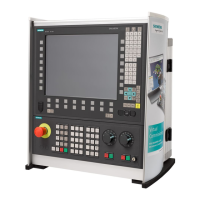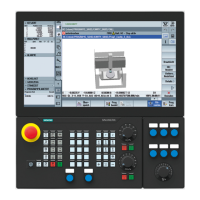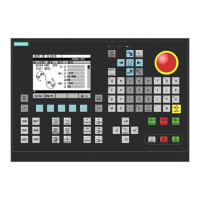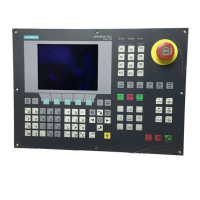Detailed Description
2.2 Flat D number structure
Tool Compensation (W1)
2-18 Function Manual, 08/2005 Edition, 6FC5397-0BP10-0BA0
2.2.2 Creating a new D number
Programming
Tool compensations can be programmed with system variables $TC_DP1 to $TC_DP25.
The contents have the same meaning as before.
The syntax changes: no T number is specified.
• "Flat D number" function active:
$TC_DPx[d] = value where x=parameter no., d=D number,
i.e., data with this syntax can only be loaded to the NCK if the "Flat D number" function is
activated.
• "Flat D number" function inactive:
$TC_DPx[t][d] = value where t = T number, d = D number
A D number can only be assigned once for each tool, i.e., each D number stands for exactly
one compensation data block.
A new data block is stored in the NCK memory when a D number that does not exist is
created for the first time.
Machine data:
MD18100 $MN_MM_NUM_CUTTING_EDGES_IN_TOA
is used to set the maximum number of D or compensation data blocks (max. 600).
Data backup
Data backup is carried out in the same format, i.e., a backup file created with the "Flat D
number" function cannot be loaded on the NCK of a control that has not activated the
function.
The same also applies in reverse for transfer.
D range
1 - 99 999 999
2.2.3 Read D number from the PLC
Reading from system variables
The programmer has various options for specifying the D number in the part program.
One option is to read it from the system variables
$A_DNO[n] ; (n=1 to 9).
("DNO" stands for D number.)
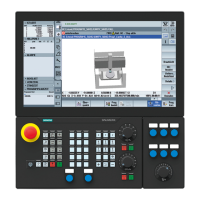
